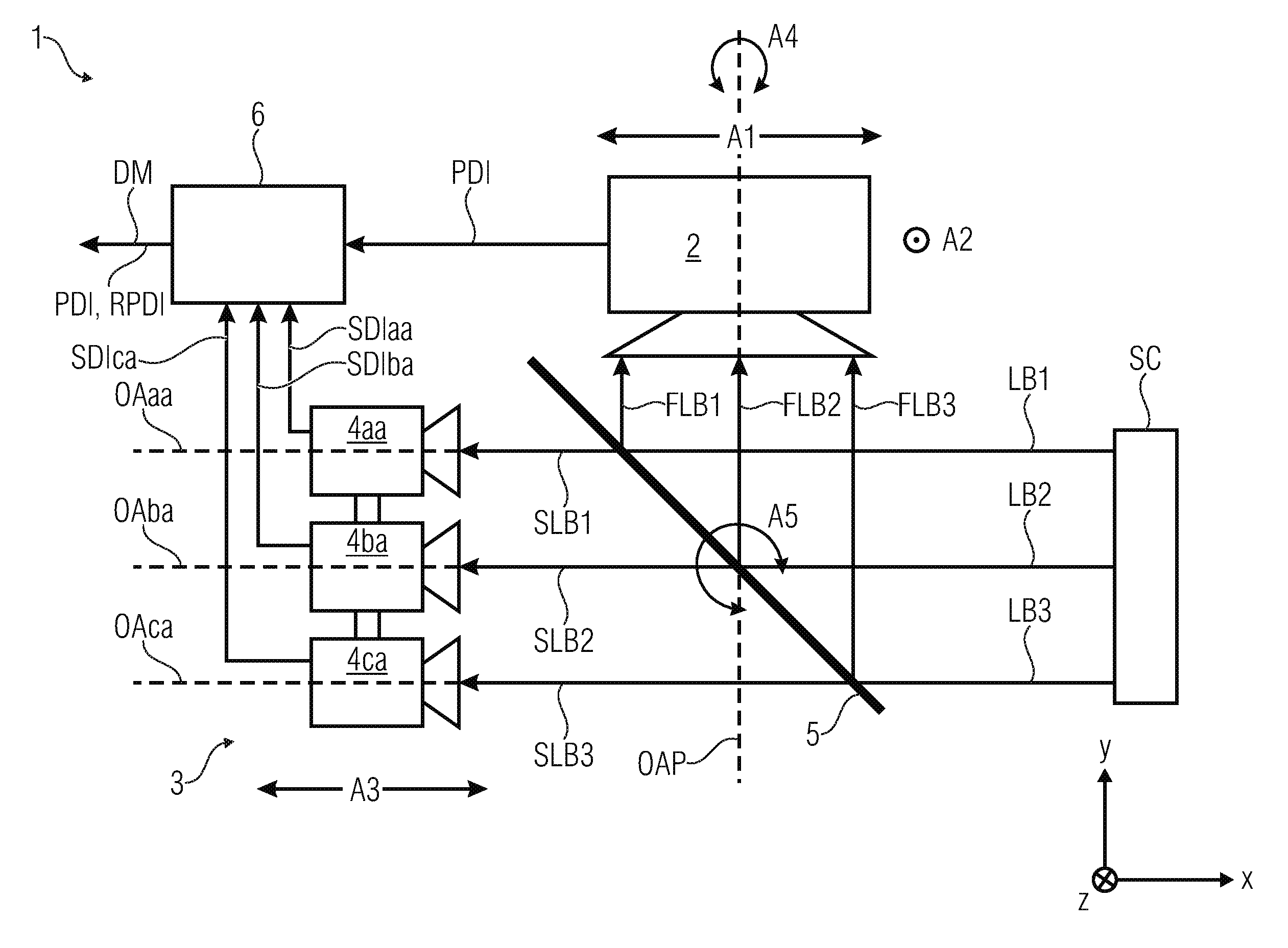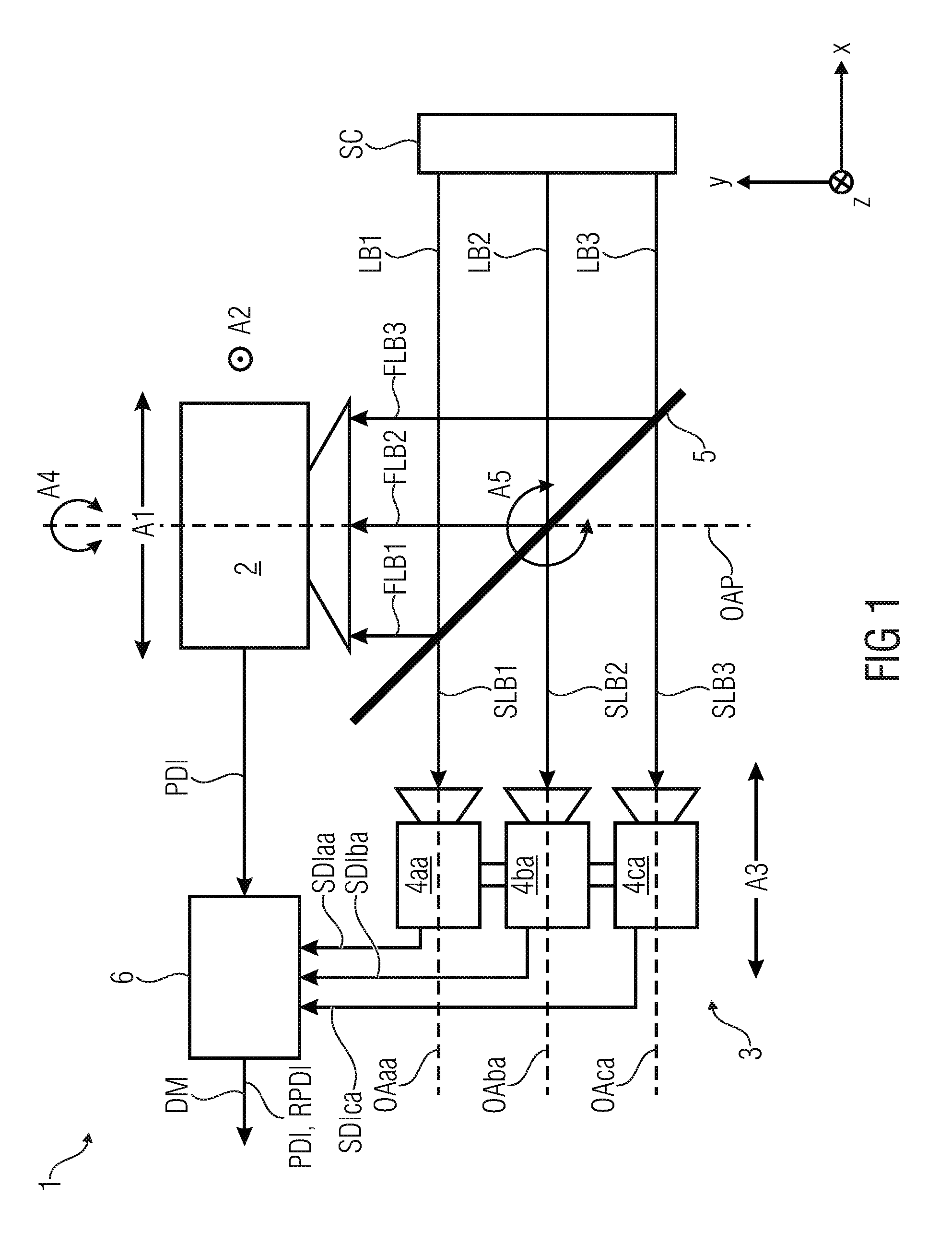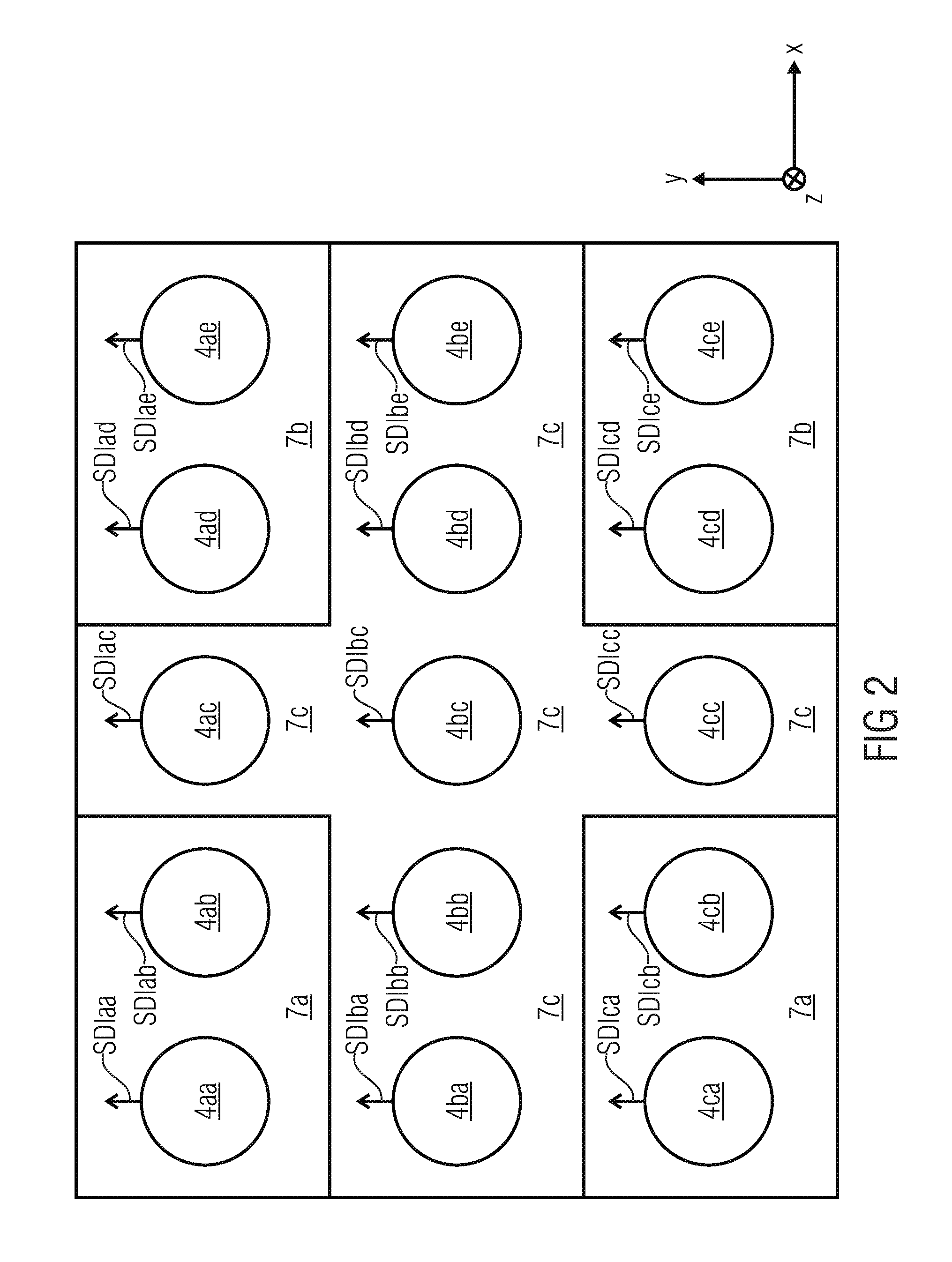Light-field camera
- Summary
- Abstract
- Description
- Claims
- Application Information
AI Technical Summary
Benefits of technology
Problems solved by technology
Method used
Image
Examples
first embodiment
[0070]FIG. 1 illustrates a light-field camera 1 according to the invention in a schematic view.
[0071]The light-field camera for capturing multiple views of a scene SC, the multiple views representing samples of a light-field, the light-field camera 1 comprising:
[0072]a primary camera 2 configured for capturing a primary digital two-dimensional image PDI of the scene SC;
[0073]a two-dimensional camera array 3 comprising a plurality of secondary cameras 4aa . . . 4ce, wherein each of the secondary cameras 4aa . . . 4ce is configured for capturing a secondary digital two-dimensional image SDIaa . . . SDIce of the scene SCI in order to produce at least one set of secondary digital two-dimensional images SDIaa . . . SDIce of the scene;
[0074]a semitransparent mirror 5 arranged in such way that an incident light beam LB1, LB2, LB3 originating from the scene SC is split up in a first partial light beam FLB1, FLB2, FLB3, which is directed to the primary camera 2, and a second partial light be...
second embodiment
[0100]FIG. 3 illustrates a light-field camera 1 according to the invention in a schematic view.
[0101]In the embodiment shown in FIG. 3, the camera array 3 has a fixed position, while the primary camera 2 can be moved in x-, y- and z-direction. In another embodiment, the primary camera 2 is fixed and the camera array 3 can be moved in x-, y- and z-direction. In another embodiment, the camera array 3 can be moved in x- and y-direction, while the primary camera 2 can be moved in y-direction.
[0102]In all these configurations, the mirror 5 can be optionally removed such that the camera array has a direct view on the scene without any reflections or loss of light by the mirror. In another embodiment, the locations of the array 3 and primary camera 2 are interchanged.
[0103]In again another embodiment, some of the mechanical adjustment possibilities are eliminated in order to simplify the construction of the rig. For instance, in FIG. 3 the position of the primary camera 2 might be fixed, t...
third embodiment
[0144]FIG. 9 illustrates a processing unit 6 and a post-processing unit 16 in a schematic view.
[0145]As in the embodiment of FIG. 4 the processing unit 6 comprises a rectification module 8 configured for simultaneously rectifying of the secondary digital two-dimensional images SDIaa . . . SDIce of the set of secondary digital two-dimensional images SDIaa . . . SDIce and the primary digital two-dimensional image PDI by using feature points or checkerboards in order to produce a set of rectified secondary digital two-dimensional images RSDIaa . . . RSDIce and a rectified primary digital two-dimensional image RPDI.
[0146]According to an embodiment of the invention the processing unit 6 comprises a depth information computing module 15 configured for computing a depth information DIMaa . . . DIMce for each of the secondary cameras 4aa . . . 4ce and a depth information DM for the primary camera 2 based on the set of rectified secondary digital two-dimensional images RSDIaa . . . RSDIce an...
PUM
 Login to view more
Login to view more Abstract
Description
Claims
Application Information
 Login to view more
Login to view more - R&D Engineer
- R&D Manager
- IP Professional
- Industry Leading Data Capabilities
- Powerful AI technology
- Patent DNA Extraction
Browse by: Latest US Patents, China's latest patents, Technical Efficacy Thesaurus, Application Domain, Technology Topic.
© 2024 PatSnap. All rights reserved.Legal|Privacy policy|Modern Slavery Act Transparency Statement|Sitemap



